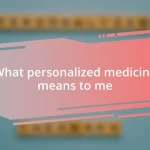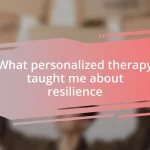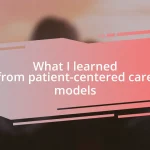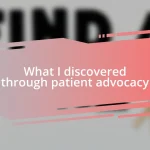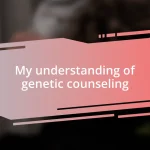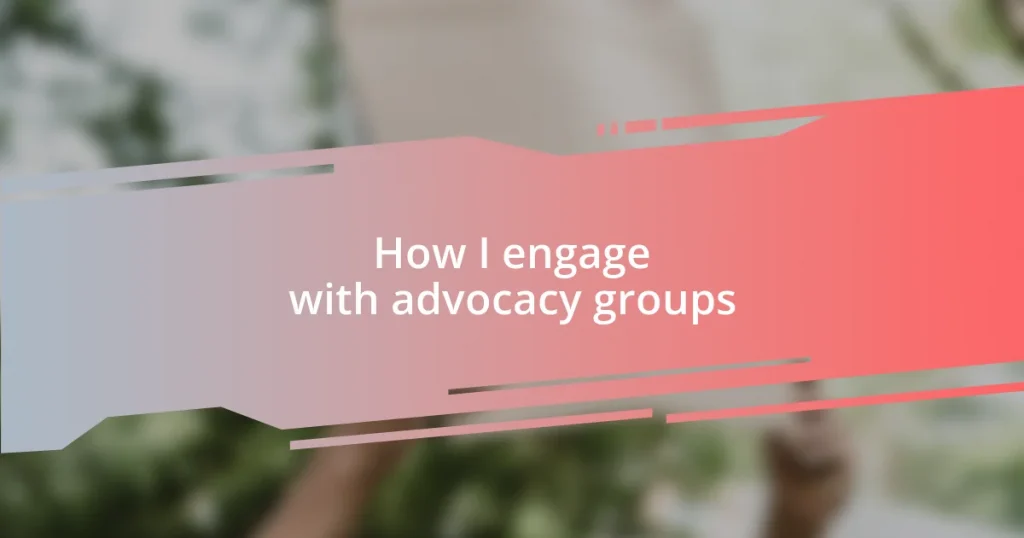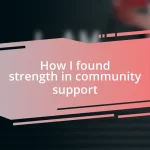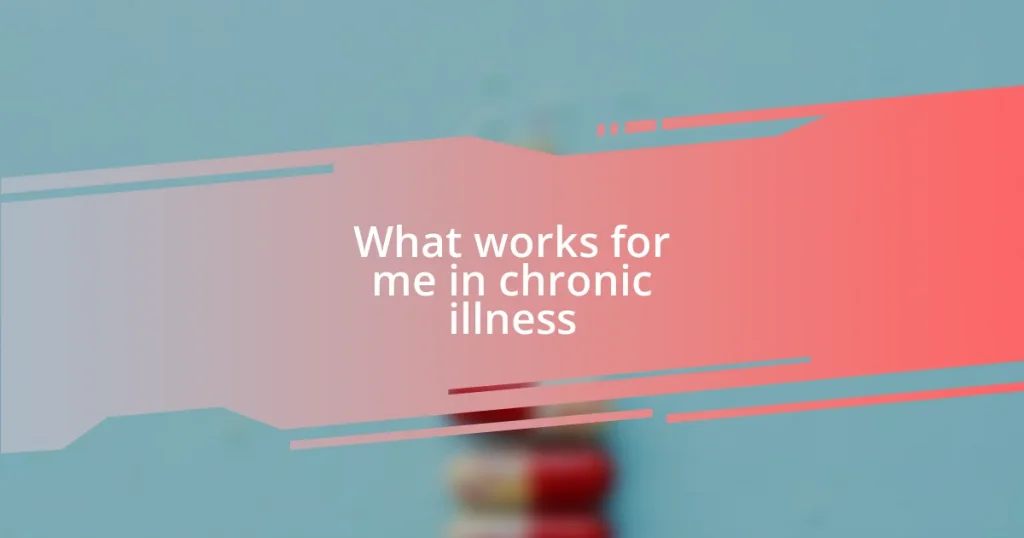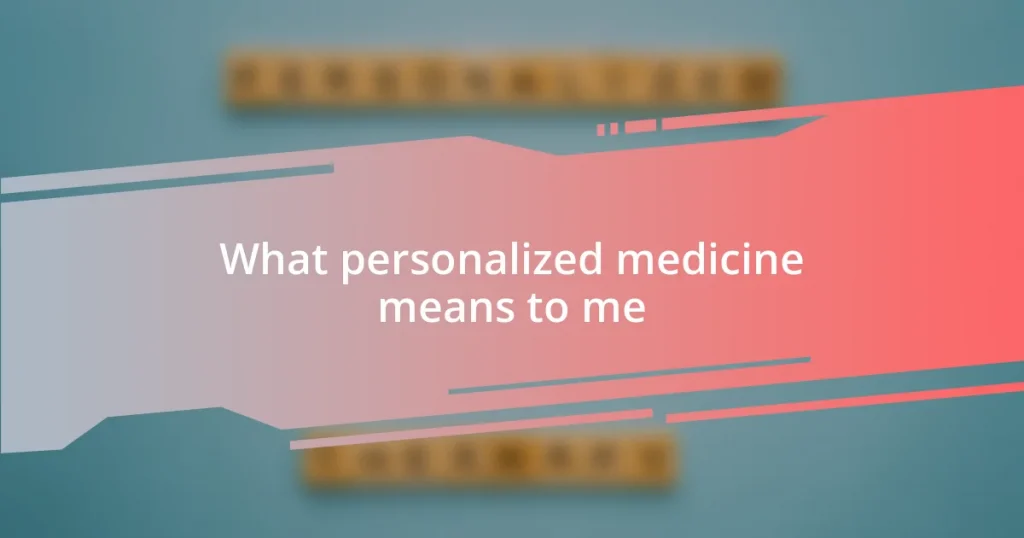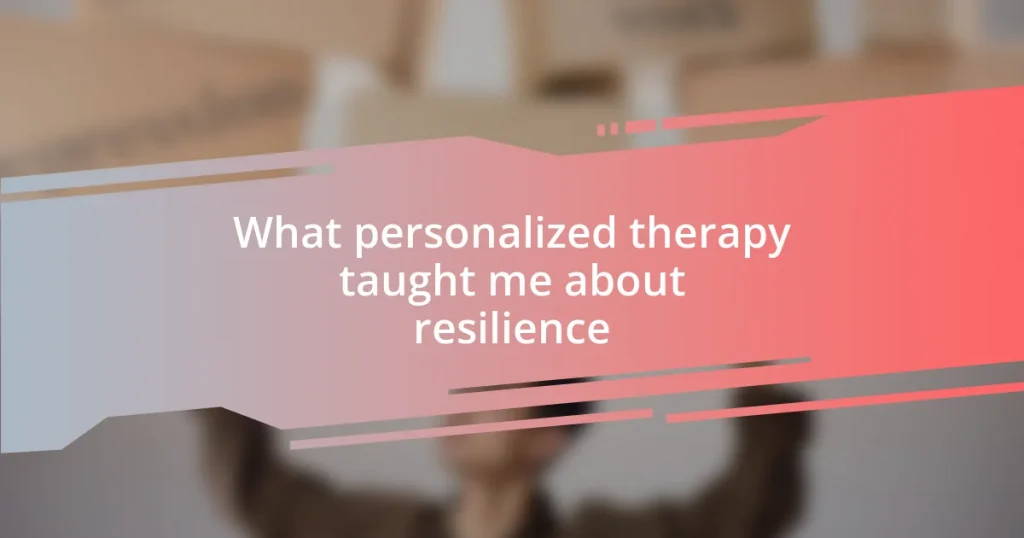Key takeaways:
- Advocacy groups leverage personal narratives and emotional connections to engage audiences and drive meaningful change.
- Building strong relationships with fellow advocates through active listening and shared experiences enhances collaborative efforts and impact.
- Measuring advocacy impact involves tracking both quantitative metrics and qualitative feedback to understand effectiveness and inform future strategies.
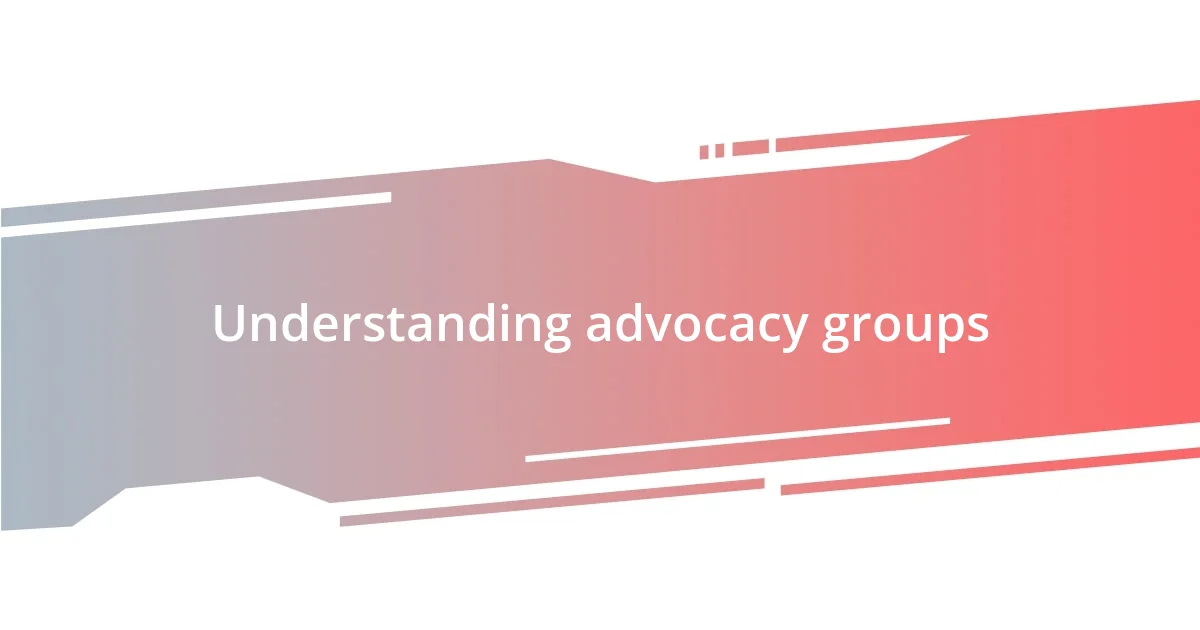
Understanding advocacy groups
Advocacy groups play a pivotal role in shaping public policy and raising awareness on critical issues. From my experience, I’ve seen how passionate individuals can rally together to create meaningful change. Have you ever attended a meeting or event that truly opened your eyes to a cause? I remember joining a local environmental advocacy group and feeling the energy in the room—shared stories motivated us to act.
These groups often consist of dedicated volunteers who are driven by a common purpose. I once met volunteers deeply affected by a health crisis, who turned their pain into a mission. Their voices were not just echoes in the wind; they were a force, reminding us that personal experiences fuel the fire of advocacy. What’s fascinating is how these personal narratives can resonate with broader audiences, making complex issues more relatable.
Understanding advocacy groups means recognizing their diverse tactics and strategies to influence change, whether through grassroots organizing, lobbying, or public campaigns. I’ve often found it enlightening to dissect their approaches—how a letter writing campaign can mobilize hundreds or how a viral social media post can shift public opinion. Have you ever considered what makes an advocacy effort successful? It often boils down to a clear message and the ability to connect with people’s emotions, which is something I deeply admire in effective advocacy work.
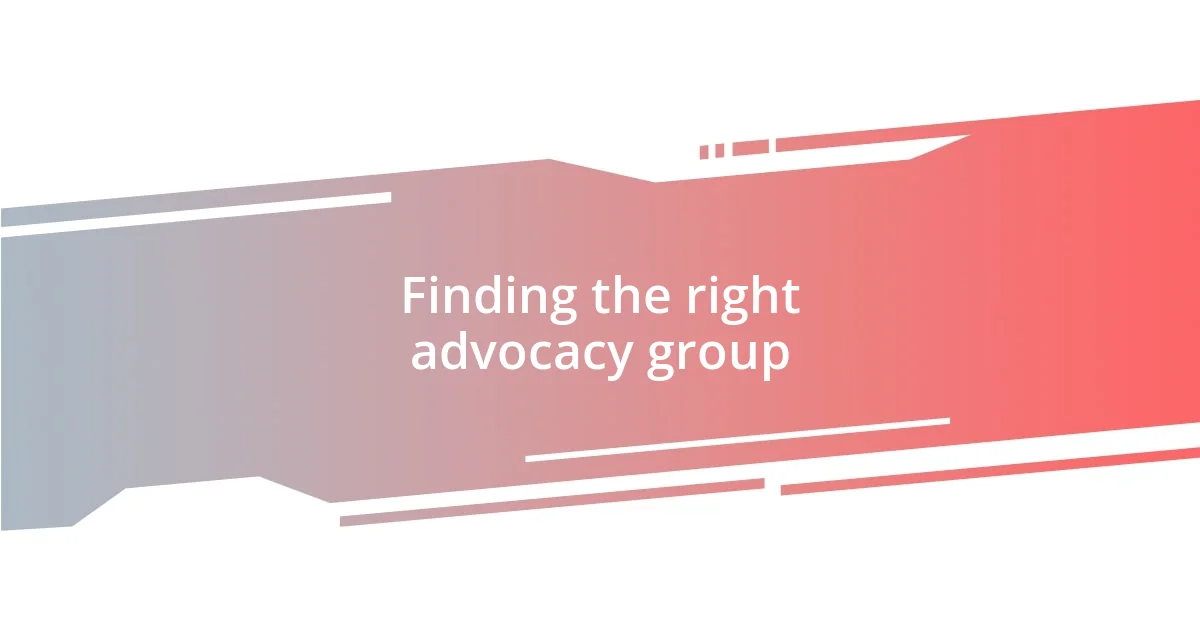
Finding the right advocacy group
Finding the right advocacy group requires introspection and research. I remember searching for a group aligned with my passion for social justice. After reviewing various organizations, attending their events, and even speaking with members, I discovered that the connection goes beyond shared interests—it’s about a shared vision and camaraderie that fuels collective efforts.
It’s essential to consider the group’s values and mission. Early in my journey, I gravitated towards an organization that emphasized community empowerment. However, I soon realized that their strategies didn’t resonate with my approach. I learned that it’s not enough to agree on the issue; the methods of advocacy must align with my strengths and beliefs. What can you embrace based on your skills?
Exploring the landscape of advocacy groups also involves analyzing their impact and reach. I once became involved with a local group that had a powerful social media presence, which amplified our message significantly. Seeing how they mobilized supporters through engaging content was inspiring. Have you observed how certain groups harness the power of technology effectively? This realization not only changed my engagement strategy but also underscored the importance of picking a group that matches your values and approach to advocacy.
| Aspect | Importance |
|---|---|
| Alignment of Values | Ensures personal satisfaction and motivation in advocacy efforts. |
| Group Impact | Affects the potential for successful change and reach within the community. |
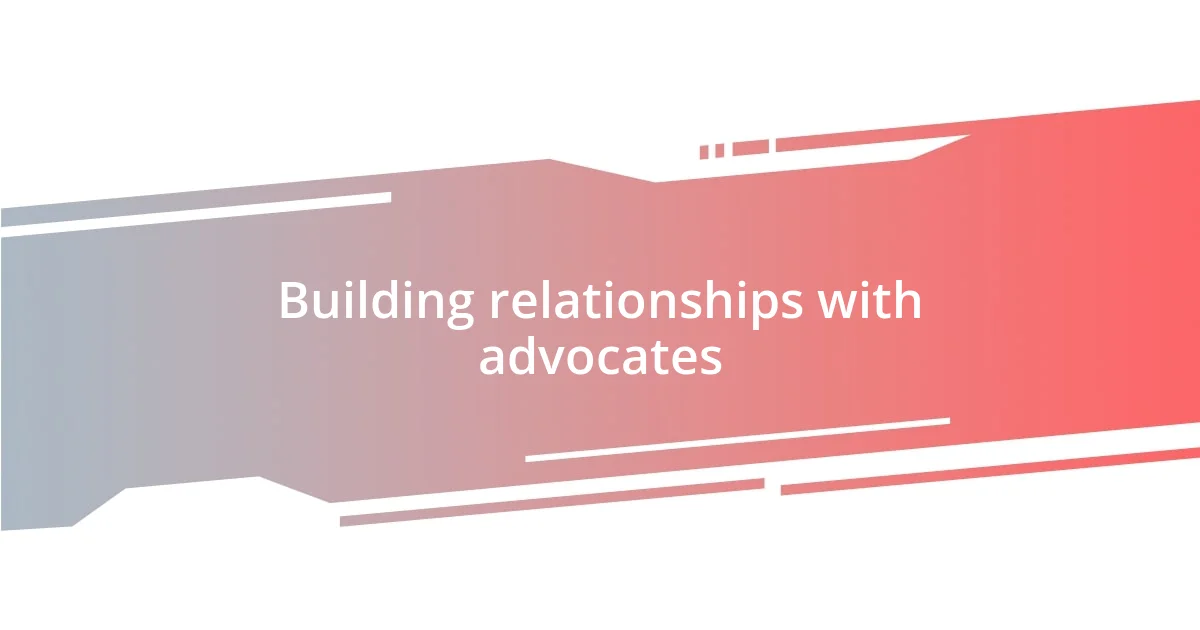
Building relationships with advocates
Building relationships with advocates is a vital aspect of effective engagement in any advocacy effort. I’ve found that genuine relationships are often built through shared experiences. For instance, I attended a community workshop where advocates and activists shared their journeys. Hearing their personal stories humanized the issues, and it struck me how such moments foster trust and solidarity. Establishing that connection can be as simple as asking questions and showing vulnerability. When advocates feel heard, they’re more likely to collaborate and exchange ideas.
Here are some ways I approach building these relationships:
- Active Listening: I prioritize understanding their perspectives by genuinely listening.
- Participating in Events: I engage regularly with advocates at community events or online forums to deepen bonds.
- Offering Support: I look for ways to support their initiatives, whether it’s sharing their work or volunteering my time.
- Following Up: After initial meetings, I reach out to keep the conversation going and show that I value the relationship.
- Being Open: I share my own experiences to create an environment of trust and openness.
These practices underscore a mutual commitment to advocacy, enhancing our collective impact.
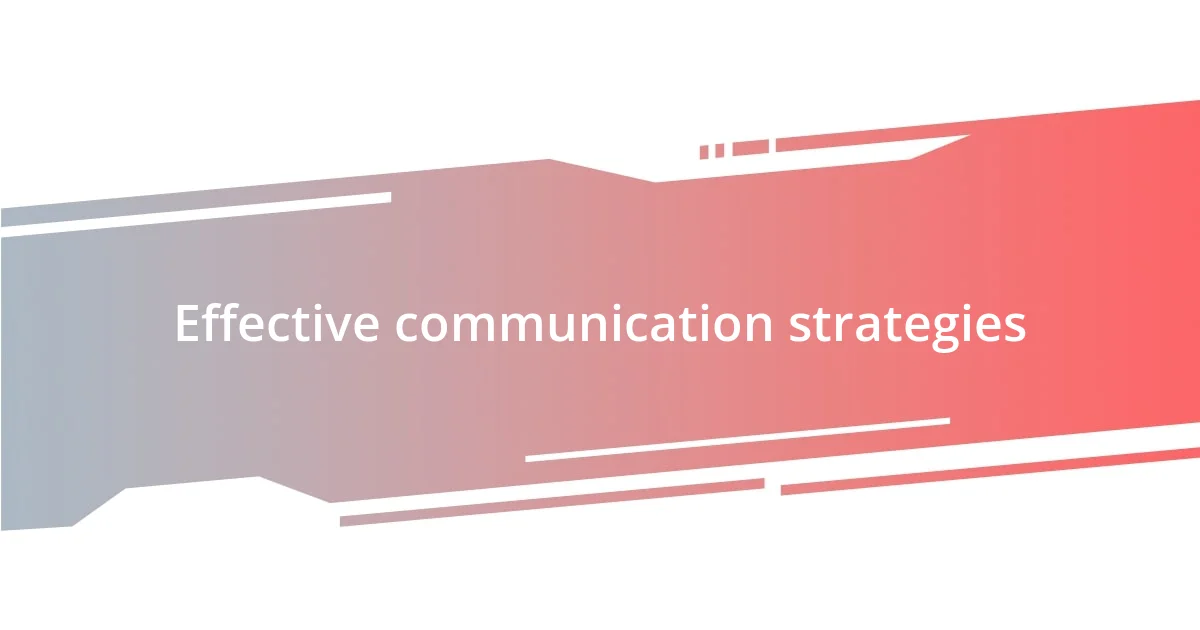
Effective communication strategies
Effective communication is the bedrock of successful advocacy. I remember a time when I participated in a discussion with fellow advocates about our messaging strategy. We quickly realized that clarity and consistency in communication were paramount. By honing our key messages, we ensured that our audience not only understood our cause but also felt inspired to join us. Have you ever experienced the difference clear communication can make in building support?
Another strategy I’ve found invaluable is using storytelling to convey our message. One evening, I shared a personal experience during a meeting that highlighted the real-life consequences of our advocacy. The room fell silent, and I could see the impact. It was as if everyone connected on a deeper level, transcending the mere facts and figures. Stories resonate; they create an emotional connection that raw data simply cannot. How might your personal experiences shape your advocacy narrative?
Finally, leveraging diverse platforms is key to reaching a wider audience. From social media campaigns to community forums, each channel offers a unique way to engage. I once organized a virtual town hall that attracted participants from different backgrounds, allowing for rich dialogue. The exchange of ideas fueled insights that led to actionable strategies. Are you utilizing the full range of platforms available to amplify your voice and message?
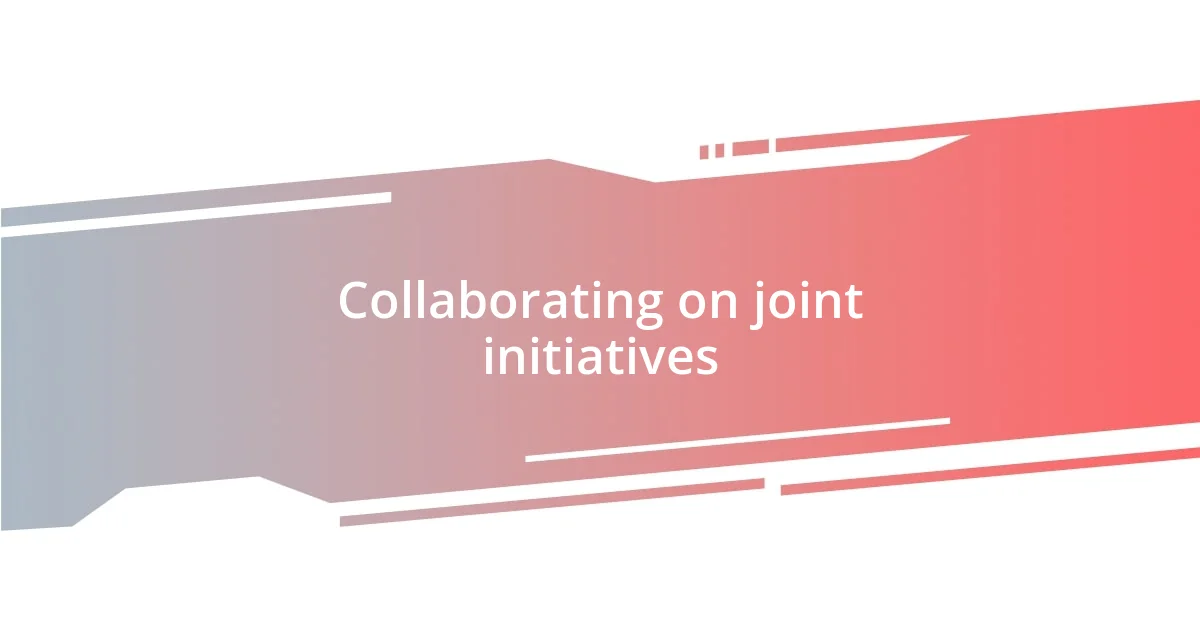
Collaborating on joint initiatives
When it comes to collaborating on joint initiatives, I’ve discovered that the alignment of goals is crucial. For example, I once teamed up with a local environmental advocacy group to launch a campaign focused on reducing plastic waste. We held brainstorming sessions that not only sparked innovative ideas but also strengthened our bond as we worked toward a common cause. Have you ever found that shared purpose can ignite motivation in a group, driving everyone to contribute their best?
During that campaign, we organized community clean-up events, which allowed us to engage directly with local residents while showcasing our joint commitment. I remember one elderly participant who shared her story about how pollution had affected her neighborhood. It was an emotional moment, connecting the dots between our initiative and its real-world impact. This shared emotional experience inspired everyone involved, reinforcing the idea that our teamwork was more than just a project; it was about healing and uniting the community.
This collaborative effort taught me the value of flexibility and open communication. Sometimes, ideas clash, and it’s easy to get caught up in disagreements. But I found that by embracing differing opinions and remaining adaptable, we could foster a more creative atmosphere. Do you think being willing to compromise can actually lead to breakthroughs in joint initiatives? In my experience, when partners feel safe to express their thoughts, we often discover new paths that we hadn’t considered before.
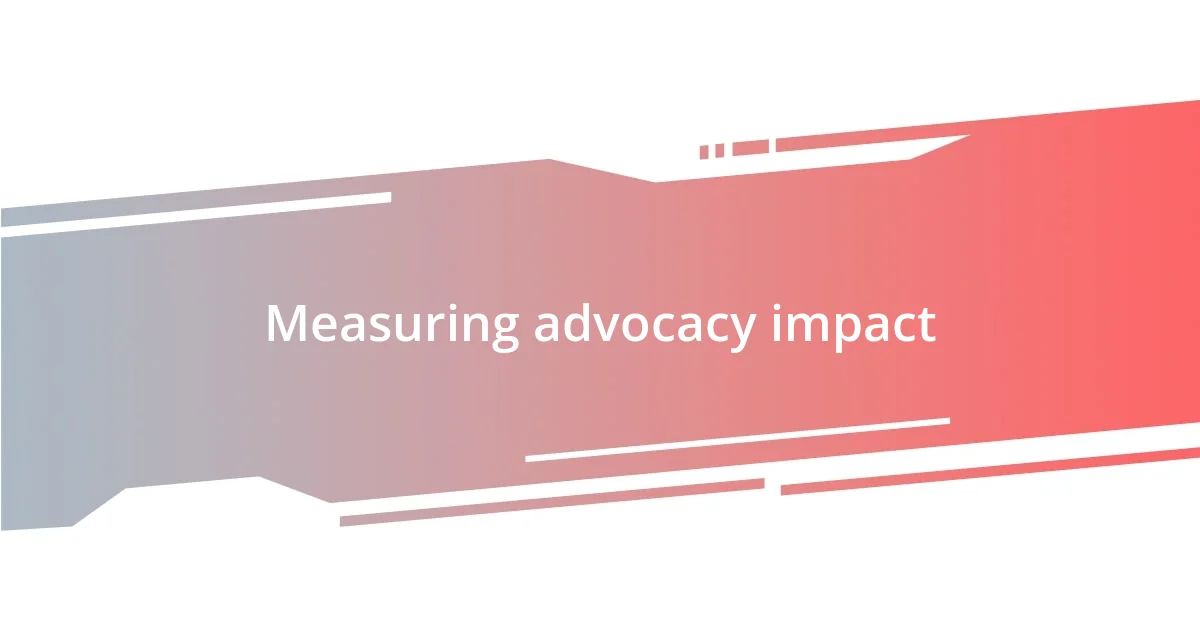
Measuring advocacy impact
Measuring the impact of advocacy can sometimes feel abstract, but I’ve always found it crucial to ground our efforts in tangible outcomes. After a recent campaign I led, we surveyed participants to gauge their awareness before and after our initiatives. The noticeable increase in understanding was gratifying—mentioning specific statistics not only helps validate our work but also offers insights for future efforts. Have you ever tracked metrics that made you realize just how far your message traveled?
Another pivotal moment came when I connected with local policymakers to discuss the ramifications of our advocacy. I vividly recall the day a legislator acknowledged our campaign in their speech. Hearing them reference our specific calls to action was uplifting and reaffirmed that our work was making waves. It made me wonder how every touchpoint, whether big or small, contributes to a broader movement. What kinds of acknowledgments or support have you received that signaled your advocacy was gaining traction?
I also emphasize qualitative feedback, as personal stories can often illuminate the numbers behind our impact. During a community forum, one participant tearfully shared how our resources had changed their life—this reminder of our purpose brought the data to life. Sometimes, these emotional insights fuel our motivation and clarify our path forward. How do you assess both the tangible and intangible outcomes of your advocacy efforts? For me, blending both perspectives has proven invaluable in truly understanding our effectiveness.
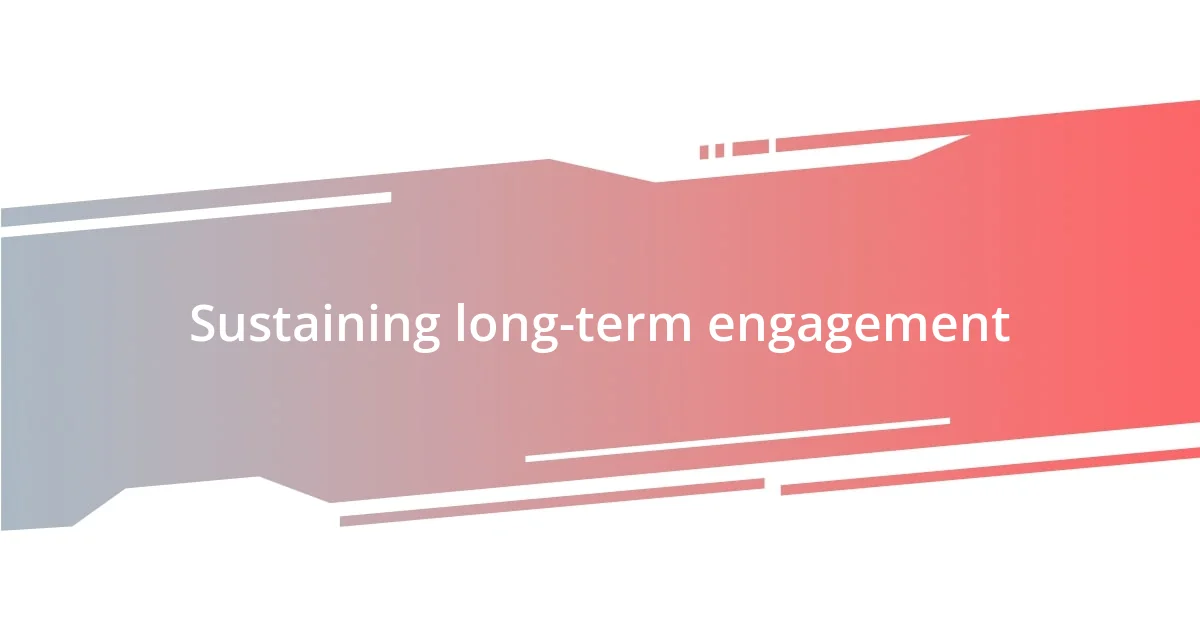
Sustaining long-term engagement
Sustaining long-term engagement requires consistent effort and genuine connection. I remember attending a series of workshops with an advocacy group focused on mental health awareness. Over time, those workshops became more than just events; they transformed into supportive communities where we could share our struggles and successes. How often do you find that ongoing relationships with fellow advocates enhance your commitment to the cause?
One particularly powerful experience was when we set up a monthly gathering where everyone could share their stories, challenges, and progress. I was surprised at how these intimate sessions deepened our bonds and fueled our passion for advocacy. In one of those meetings, a young advocate shared her journey of overcoming stigma, which moved us all. It was moments like these that reminded me that our individual stories are the lifeblood of sustained engagement. Have you considered how storytelling can strengthen connections in your advocacy work?
To keep the momentum going, I believe it’s vital to celebrate small wins together. After a year of effort, our group achieved a significant milestone in mental health policy reform. We organized a small celebration that made everyone feel recognized and valued for their contributions. This event reignited our collective enthusiasm and reminded us all why we started this journey. Have you celebrated milestones in your advocacy? For me, it’s a wonderful way to cultivate lasting commitment and enthusiasm among supporters.

